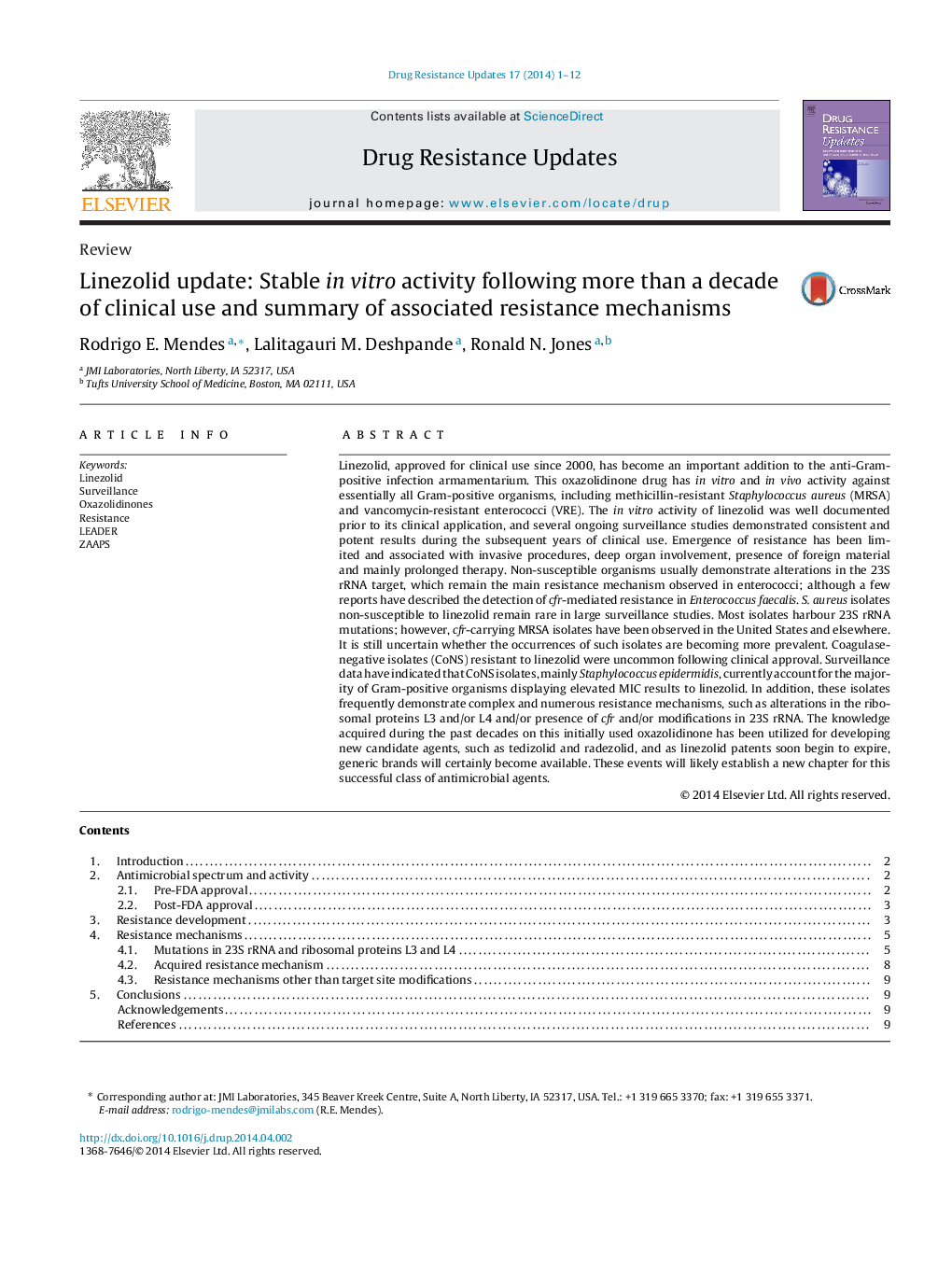| Article ID | Journal | Published Year | Pages | File Type |
|---|---|---|---|---|
| 2120320 | Drug Resistance Updates | 2014 | 12 Pages |
Linezolid, approved for clinical use since 2000, has become an important addition to the anti-Gram-positive infection armamentarium. This oxazolidinone drug has in vitro and in vivo activity against essentially all Gram-positive organisms, including methicillin-resistant Staphylococcus aureus (MRSA) and vancomycin-resistant enterococci (VRE). The in vitro activity of linezolid was well documented prior to its clinical application, and several ongoing surveillance studies demonstrated consistent and potent results during the subsequent years of clinical use. Emergence of resistance has been limited and associated with invasive procedures, deep organ involvement, presence of foreign material and mainly prolonged therapy. Non-susceptible organisms usually demonstrate alterations in the 23S rRNA target, which remain the main resistance mechanism observed in enterococci; although a few reports have described the detection of cfr-mediated resistance in Enterococcus faecalis. S. aureus isolates non-susceptible to linezolid remain rare in large surveillance studies. Most isolates harbour 23S rRNA mutations; however, cfr-carrying MRSA isolates have been observed in the United States and elsewhere. It is still uncertain whether the occurrences of such isolates are becoming more prevalent. Coagulase-negative isolates (CoNS) resistant to linezolid were uncommon following clinical approval. Surveillance data have indicated that CoNS isolates, mainly Staphylococcus epidermidis, currently account for the majority of Gram-positive organisms displaying elevated MIC results to linezolid. In addition, these isolates frequently demonstrate complex and numerous resistance mechanisms, such as alterations in the ribosomal proteins L3 and/or L4 and/or presence of cfr and/or modifications in 23S rRNA. The knowledge acquired during the past decades on this initially used oxazolidinone has been utilized for developing new candidate agents, such as tedizolid and radezolid, and as linezolid patents soon begin to expire, generic brands will certainly become available. These events will likely establish a new chapter for this successful class of antimicrobial agents.
